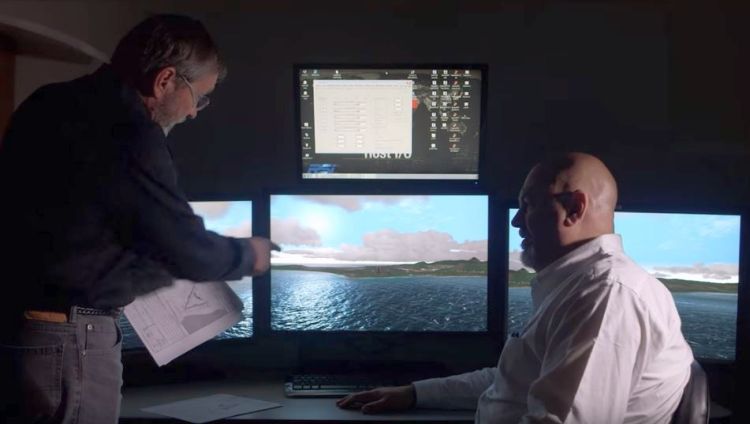RSi is hosting the 2018 FSEMC, an SAE Industry Technologies Consortia (ITC) and ARINC event, at its facility outside Irving, Texas, Sept. 17 through 20, 2018. The annual conference, attended by more than 300 flight simulator experts from around the world, identifies technical solutions to engineering and maintenance issues for short- and long-term cost savings and increased efficiency for simulator users.

This year’s FSEMC includes a Technical Workshop during which the following topics will be openly discussed:
- Other Training Devices (everything not an FFS)
- New technology applications
- Tailoring training to appropriate levels
- EASA’s recent efforts and explorations
- COTS: friend or enemy?
- Motion cueing in lower-level FSTD/maintenance
During the FSEMC, attendees will hear from esteemed academics on several topics, including:
- How to improve a flight simulation training device (FSTD) Technical Operation
- Simulation within an Advance Qualification Program (AQP) Training Program
- Pilot training for NextGen and SESAR operations – maintaining the illusion in a data-rich 20-20 operation environment
- Resolution vs. frame rate – a cost/performance/training benefit comparison
- China navigation technology (ADS-B) roadmap/deployment status and the impact of technology insertion in FSTD
- Capabilities in extended envelope training, current status/achievements
- Virtual reality in flight training

FSEMC facilitates an open dialogue of discussion items, whereby users and operators submit questions weeks in advance and suppliers prepare answers to brief in the open forum. By hearing that other simulator users have similar issues, the collaboration from multiple stakeholders benefits the entire industry.
FSEMC includes information about cost-effective solutions to simulator operational and maintenance challenges, as well as ARINC standards used by airlines, operators, and regulators in flight crew training to increase simulator readiness, boost safety and efficiency, and reduce operational costs.
Providing simulator users with solutions to persistent and often difficult engineering issues, the collective power of the FSEMC has shaped the industry as a voice in the ongoing dialogue with regulatory agencies around the world.
The objective of FSEMC is the improvement of flight simulator and training device operation by promoting better reliability, maintenance, and support techniques through the exchange of engineering, maintenance, and associated technical information and the development of voluntary technical standards related to simulation and training. FSEMC also seeks to promote and advance the state of the art of the flight simulation and training industry to the mutual benefit of its members.

FSEMC membership includes European, North American, Asian, and African airlines, training suppliers, and training equipment and services suppliers in the flight training industry.
The FSEMC Conference is open to all organizations including airframers, Training Device Manufacturers (TDM), airlines, operators, and suppliers. The conference has an attendance charge of $700 USD, although ARINC IA Members and Sponsors gain access to conference at no charge. Members and Sponsors are also entitled to a wider range of benefits including ARINC Standards and other products.
ARINC Industry Activities (ARINC IA) is an SAE ITC (Industry Technologies Consortia) program. The SAE ITC team specializes in establishing and managing consortia by providing proven processes, tools and resources. ITC enables public, private, academic and government organizations to connect and collaborate in neutral, pre-competitive forums thus empowering the setting and implementation of strategic business improvements in highly engineered industries globally.
SAE ITC is an affiliate of SAE International. SAE International is a global association committed to being the ultimate knowledge source for the engineering profession. By uniting over 127,000 engineers and technical experts, we drive knowledge and expertise across a broad spectrum of industries. We act on two priorities: encouraging a lifetime of learning for mobility engineering professionals and setting the standards for industry engineering. We strive for a better world through the work of our philanthropic SAE Foundation, including programs like A World in Motion® and the Collegiate Design Series™.
Learn more
-
Register online for the upcoming FSEMC on the FSEMC events website
-
Maximize your organization’s potential as a member or sponsor of ARINC IA
-
Read SAE International content on flight simulator technologies, requirements, and standards
-
Bookmark http://www.sae.org/news to keep pace with the latest aerospace technology news & information.
-
Subscribe to SAE MOBILUS for access to more than 200,000 resources covering a wide range of technologies all surrounding the aerospace, automotive, and commercial vehicle industries. These content types include: aerospace standards, ground vehicle standard, historical standards, technical papers, eBooks, magazines, and video.
Courtney E. Howard is editorial director and content strategist at SAE International, Aerospace Products Group. Contact her by e-mail at courtney.howard@sae.org.
Images courtesy RSi Visual Systems.
Continue reading »